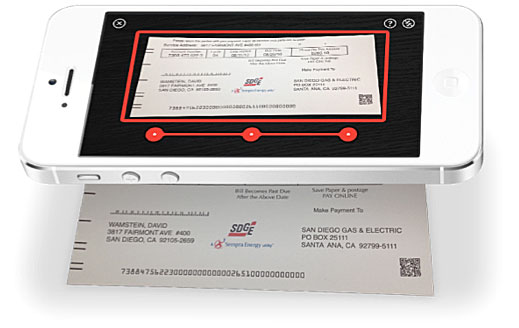First Financial has a great commercial promoting its mobile services. In the ad, a husband dupes his wife into swapping chores: he’ll do the banking if she does his yard work. She falls for his offer because — in the past — banking was an arduous chore. Well that was before mobile banking. Now, with the snap of a few photos the husband can deposit the checks are pay the bills.
The commercial is not only fun, it illustrates how offering better mobile services is a competitive advantage that smaller financial institutions can use to compete with the big guys.
Agility
In a business context, agility typically refers to the ability of an organization to rapidly adapt to market and environmental changes in productive and cost-effective ways. Smaller financial institutions have an advantage in that typically they’re more agile than larger institutions. They can implement new technologies and make decisions without going through as many hoops.
First Financial is ranked #177 by asset size with $5.048 billion. The #1 ranked bank in the country has assets of approximately $1,990 trillion. How can First Financial compete with the largest financial institution? By offering — and marketing! — better mobile services, the kind that make banking more convenient for consumers.


Fractional Marketing for Financial Brands
Services that scale with you.

Send the Right Offers to the Right Consumers
Achieve a better return on your marketing investment. Leverage behavioral data and analytics to target the right customers with the best possible offers.
Read More about Send the Right Offers to the Right Consumers
First Mover Advantage
Given the agility of smaller institutions, adding new mobile services and then marketing them across all channels (first to existing customers, then to prospects) can give you a huge first mover advantage. Smaller banks and credit unions can attract the highly desirable and profitable customer group known as “mobile bankers.”
A 2012 study by AlixPartners looked at the importance of mobile services to consumers and the demographics of these valuable “mobile bankers.” 39% of consumers in the study said that having a mobile offering is either “extremely important” or “important” in their decision to switch primary banks (and remember: those are 2012 numbers).
The study also revealed a some key insights about mobile bankers. Mobile bankers are:
- Younger. 55% of mobile banking users are between 18 and 34, vs. 25% for non-users.
- More affluent. Average income for mobile banking users is $71,000, vs. $59,000 for non-users.
- More likely to acquire additional financial services/products. Mobile banking users hold 3.1 products with their bank, vs. 2.8 for non-users.
When AlixPartners revisits this study in 2014, it’s probably safe to assume that these trends will continue.
Another analyst firm, Forrester Research, recently reviewed how customer expectations and business objectives should align. In the report, Building A World-Class Mobile Banking Strategy, Peter Wannemacher and his companions summarize their key findings eloquently:
“Mobile banking will be an important source of competitive advantage. Mobile banking will affect every aspect of retail banking business models, from customer acquisition and retention through costs and revenues to long-term brand identity. Banks need to take a disciplined approach to mobile banking strategy and invest substantially because mobile banking is fundamental to the future of retail banking.”
Beyond what analysts think, there are real-world results showing how mobile banking helps smaller financial institutions compete. Eight community banks and credit unions are using Allied Payment Networks’ Picture Pay solution, giving them a mobile photo payment service that is currently only available at one of the top five banks in the United States. Some of the highlights from these eight financial institutions include:
- Half of Picture Pay users were not previously users of online bill pay, meaning they are mobile-only bill pay customers
- Picture Pay increased customer stickiness by 10%, taking retention rates for bill pay users from 88% to 98%
- Allied found that Picture Pay end users have higher DDA balances than non-users
- 5% to 15% month-over-month growth in transactions since introducing Picture Pay
Summary & Key Takeaways
Mobile banking is a game changer, and mobile bankers are attractive customers. Don’t concede to the big boys — they aren’t are the defacto winners in the battle for mobile bankers. Smaller institutions can be more agile. Being first to market with new, practical mobile banking tools gives you a competitive advantage and keeps you ahead of the big banks.







